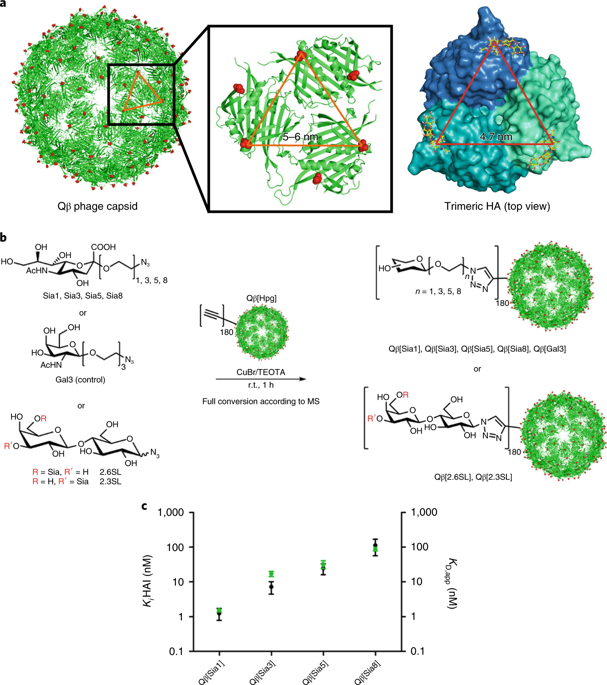当前位置:
X-MOL 学术
›
Nat. Nanotechnol.
›
论文详情
Our official English website, www.x-mol.net, welcomes your feedback! (Note: you will need to create a separate account there.)
Phage capsid nanoparticles with defined ligand arrangement block influenza virus entry.
Nature Nanotechnology ( IF 38.3 ) Pub Date : 2020-03-30 , DOI: 10.1038/s41565-020-0660-2 Daniel Lauster 1, 2 , Simon Klenk 3, 4 , Kai Ludwig 5 , Saba Nojoumi 6, 7 , Sandra Behren 3, 4 , Lutz Adam 3, 4 , Marlena Stadtmüller 8 , Sandra Saenger 8 , Stephanie Zimmler 8 , Katja Hönzke 9 , Ling Yao 9 , Ute Hoffmann 10 , Markus Bardua 10 , Alf Hamann 10 , Martin Witzenrath 9 , Leif E Sander 9 , Thorsten Wolff 8 , Andreas C Hocke 9 , Stefan Hippenstiel 9 , Sacha De Carlo 11 , Jens Neudecker 12 , Klaus Osterrieder 13 , Nediljko Budisa 6, 7 , Roland R Netz 14 , Christoph Böttcher 5 , Susanne Liese 14, 15 , Andreas Herrmann 2 , Christian P R Hackenberger 3, 4
Nature Nanotechnology ( IF 38.3 ) Pub Date : 2020-03-30 , DOI: 10.1038/s41565-020-0660-2 Daniel Lauster 1, 2 , Simon Klenk 3, 4 , Kai Ludwig 5 , Saba Nojoumi 6, 7 , Sandra Behren 3, 4 , Lutz Adam 3, 4 , Marlena Stadtmüller 8 , Sandra Saenger 8 , Stephanie Zimmler 8 , Katja Hönzke 9 , Ling Yao 9 , Ute Hoffmann 10 , Markus Bardua 10 , Alf Hamann 10 , Martin Witzenrath 9 , Leif E Sander 9 , Thorsten Wolff 8 , Andreas C Hocke 9 , Stefan Hippenstiel 9 , Sacha De Carlo 11 , Jens Neudecker 12 , Klaus Osterrieder 13 , Nediljko Budisa 6, 7 , Roland R Netz 14 , Christoph Böttcher 5 , Susanne Liese 14, 15 , Andreas Herrmann 2 , Christian P R Hackenberger 3, 4
Affiliation

|
Multivalent interactions at biological interfaces occur frequently in nature and mediate recognition and interactions in essential physiological processes such as cell-to-cell adhesion. Multivalency is also a key principle that allows tight binding between pathogens and host cells during the initial stages of infection. One promising approach to prevent infection is the design of synthetic or semisynthetic multivalent binders that interfere with pathogen adhesion1-4. Here, we present a multivalent binder that is based on a spatially defined arrangement of ligands for the viral spike protein haemagglutinin of the influenza A virus. Complementary experimental and theoretical approaches demonstrate that bacteriophage capsids, which carry host cell haemagglutinin ligands in an arrangement matching the geometry of binding sites of the spike protein, can bind to viruses in a defined multivalent mode. These capsids cover the entire virus envelope, thus preventing its binding to the host cell as visualized by cryo-electron tomography. As a consequence, virus infection can be inhibited in vitro, ex vivo and in vivo. Such highly functionalized capsids present an alternative to strategies that target virus entry by spike-inhibiting antibodies5 and peptides6 or that address late steps of the viral replication cycle7.
中文翻译:

具有确定的配体排列的噬菌体衣壳纳米颗粒可阻止流感病毒进入。
生物界面上的多价相互作用在自然界中经常发生,并在基本的生理过程(例如细胞间粘附)中介导识别和相互作用。多价也是允许在感染的初始阶段中病原体与宿主细胞之间紧密结合的关键原理。预防感染的一种有希望的方法是设计会干扰病原体粘附的合成或半合成多价结合剂1-4。在这里,我们提出了一种多价结合剂,该结合剂基于甲型流感病毒的病毒刺突蛋白血凝素配体的空间定义排列。互补的实验和理论方法证明,噬菌体衣壳携带宿主细胞血凝素配体,其排列与刺突蛋白结合位点的几何形状相匹配,可以以定义的多价模式与病毒结合。这些衣壳覆盖了整个病毒包膜,从而防止了其与宿主细胞的结合,如通过冷冻电子断层扫描所看到的。结果,可以在体外,离体和体内抑制病毒感染。这种高度功能化的衣壳为通过抑制刺突的抗体5和肽6靶向病毒进入或解决病毒复制周期后期的策略提供了另一种策略。
更新日期:2020-03-30
中文翻译:

具有确定的配体排列的噬菌体衣壳纳米颗粒可阻止流感病毒进入。
生物界面上的多价相互作用在自然界中经常发生,并在基本的生理过程(例如细胞间粘附)中介导识别和相互作用。多价也是允许在感染的初始阶段中病原体与宿主细胞之间紧密结合的关键原理。预防感染的一种有希望的方法是设计会干扰病原体粘附的合成或半合成多价结合剂1-4。在这里,我们提出了一种多价结合剂,该结合剂基于甲型流感病毒的病毒刺突蛋白血凝素配体的空间定义排列。互补的实验和理论方法证明,噬菌体衣壳携带宿主细胞血凝素配体,其排列与刺突蛋白结合位点的几何形状相匹配,可以以定义的多价模式与病毒结合。这些衣壳覆盖了整个病毒包膜,从而防止了其与宿主细胞的结合,如通过冷冻电子断层扫描所看到的。结果,可以在体外,离体和体内抑制病毒感染。这种高度功能化的衣壳为通过抑制刺突的抗体5和肽6靶向病毒进入或解决病毒复制周期后期的策略提供了另一种策略。



























 京公网安备 11010802027423号
京公网安备 11010802027423号